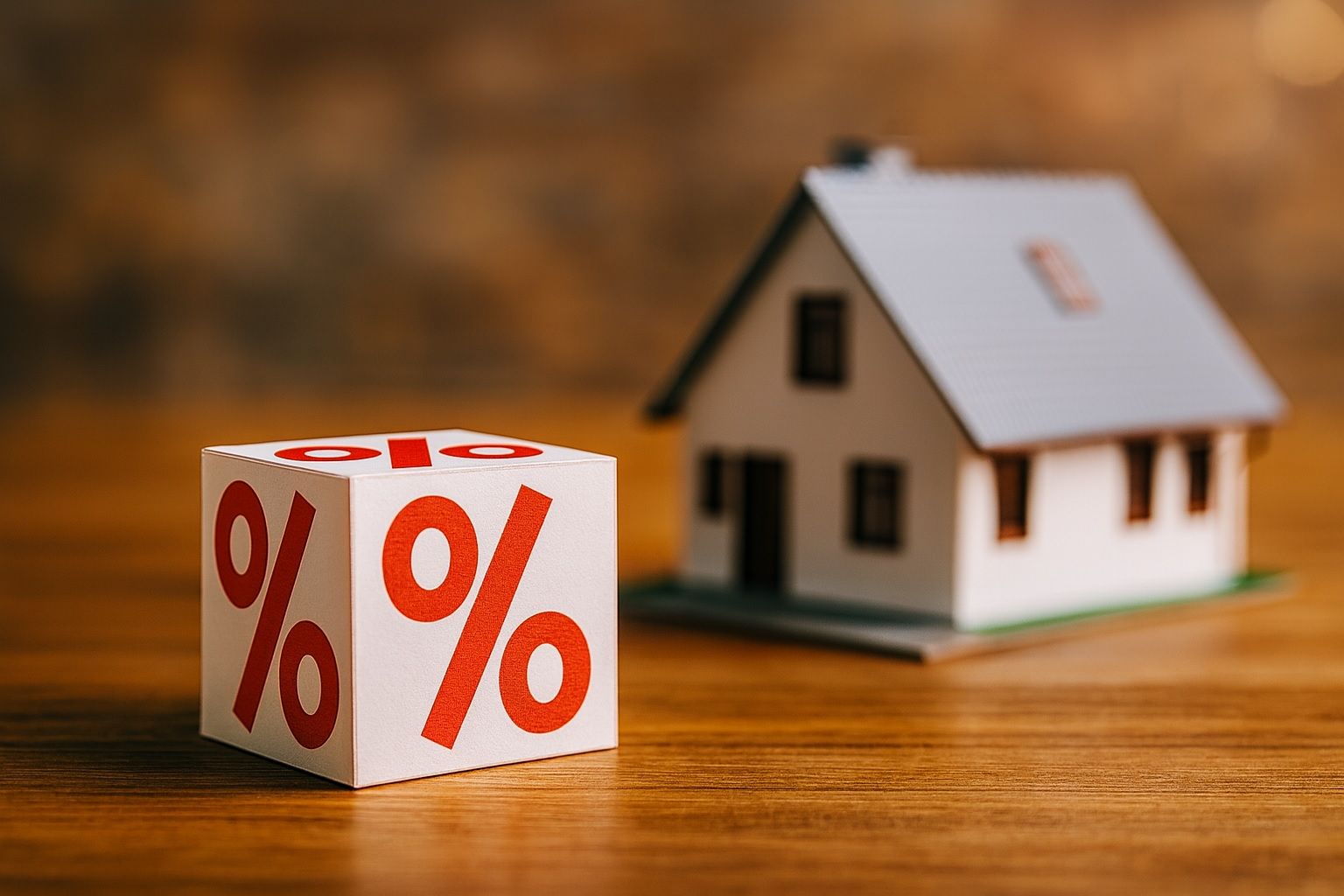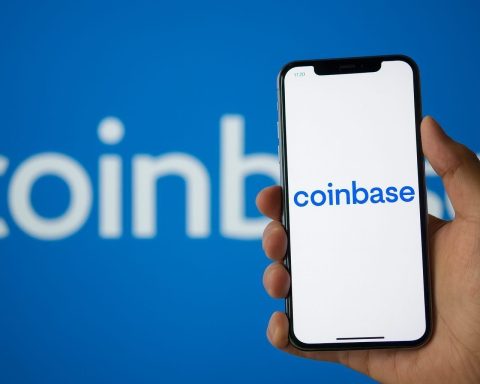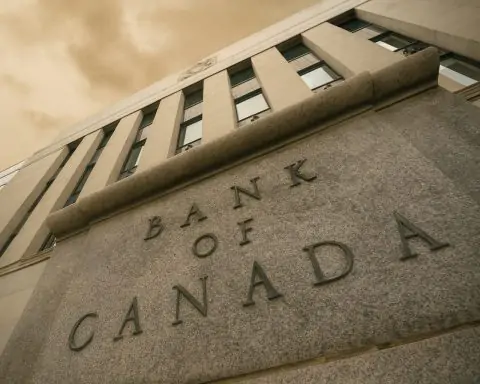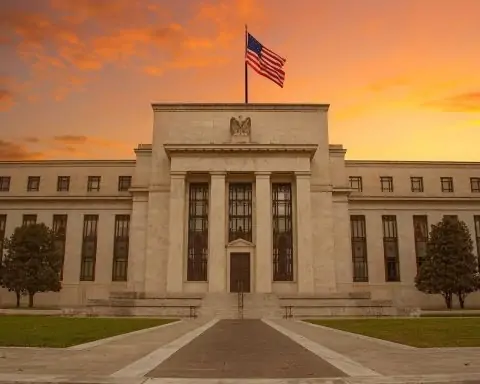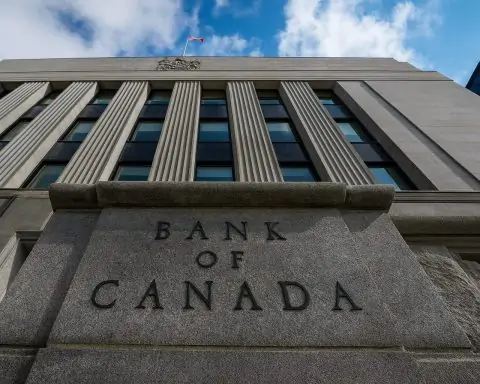- 30-Year Rates at 2025 Low: U.S. mortgage rates have fallen to around 6.2% for a 30-year fixed loan – the lowest level in over a year, down from above 7% earlier in 2025 [1]. One industry index even shows the average 30-year mortgage rate back near 6.13%, matching a three-year low reached in September [2].
- Fed Eases as Inflation Cools: The Federal Reserve delivered a 0.25% rate cut on Oct. 29 – its second cut of 2025 – bringing the benchmark rate to ~3.75–4.00% [3]. A key inflation report came in lower than expected, cementing expectations for Fed easing and helping push mortgage rates to a 13-month low [4].
- Refinancing & Buying Activity Jumps: Homeowners and buyers are responding to lower rates. Mortgage applications surged in late October – the MBA’s weekly index jumped 7.1%, with refinance applications up 9.3% and purchase applications up 4.5% from the prior week [5]. In fact, refinancing activity hit its highest level since mid-September, and purchase loan demand rose for the first time in five weeks [6].
- Housing Market Sees a Flicker of Life: The housing market remains sluggish overall, with U.S. home sales recently near multi-decade lows [7]. However, Realtors report a slight sales uptick as borrowing costs ease – September existing home sales rose at the fastest pace in 7 months, and “falling mortgage rates are lifting home sales,” according to NAR’s chief economist Lawrence Yun [8]. Still, many buyers remain cautious, with most “on the sidelines” awaiting a sub-6% rate before jumping in [9].
- Experts See Gradual Declines Ahead:Forecasters don’t expect a sharp plunge in mortgage rates. Most projections keep current mortgage rates in the mid-6% range well into 2025, with 30-year rates perhaps dipping to ~6% by late 2026 [10]. “The likely bet is [rates are] not going to fall much further,” says Bright MLS economist Lisa Sturtevant – waiting for a dramatic drop could just mean paying “higher home prices” with roughly the same mortgage costs [11].
- Advice: Don’t Try to Time the Bottom: Financial experts urge homebuyers to focus on personal readiness rather than chasing a perfect rate. Get pre-approved now and be prepared to act, but “don’t assume rates will keep falling” uninterrupted [12]. If you’re ready to buy, locking in a loan at today’s rate can be wise – “waiting on the sidelines for a big drop is risky,” one lender notes, and “the smartest move is still to lock in your rate now” rather than hold out for an extra 0.1% [13]. You can always refinance later if rates truly tumble [14].
Mortgage Rates Hit Lowest Levels of the Year
After a prolonged stretch of high borrowing costs, current mortgage rates are finally receding. In late October, the average 30-year fixed mortgage fell to its lowest level of 2025, around the 6.2%–6.3% range [15] [16]. That’s a significant improvement from January, when 30-year rates were above 7% [17]. Some daily measures even put the typical mortgage rate today below 6% on an APR basis. For example, Zillow’s daily tracker showed the 30-year rate at about 5.92% APR on October 29, down 17 basis points in one day [18] (a basis point is 0.01%). And according to Mortgage News Daily, average rates have returned to roughly 6.13%, matching the three-year low briefly seen after the Fed’s prior cut in September [19].
These figures indicate the cheapest mortgage financing in at least a year, and by some metrics in several years. Freddie Mac’s weekly survey recently reported a 6.19% average for 30-year loans – the lowest since late 2024 [20]. “Lower mortgage rates are a good thing for potential homeowners,” noted Selma Hepp, chief economist at CoreLogic, as more borrowers regain buying power when rates ease [21]. And importantly, the decline extends across loan types: 15-year fixed and FHA/VA rates have also ticked down near their yearly lows [22].
However, today’s rates are still high in a historical context – roughly double the record lows around 3% seen in 2021. The recent dip brings relief, but it’s more of a return to 2019-era costs than the ultra-cheap loans of 2020-21. As such, many buyers and homeowners are welcoming the break in rates, even if mortgage rates remain well above pre-pandemic norms.
Why Are Rates Falling Now?
Several factors have finally aligned to pull mortgage rates down. Chief among them is a shift in economic outlook: inflation has been cooling, and the Federal Reserve is easing off the brake. In late October, the Consumer Price Index came in a bit softer than expected, showing annual inflation around 3.0%. This tamer inflation reading “came in lower than expected” and cemented expectations that the Fed would cut interest rates [23]. Lower inflation matters because it relieves pressure on long-term interest rates, including mortgages. “When inflation data shows signs of easing, it can relieve pressure on long-term interest rates and bring mortgage rates down,” explained wealth advisor Lawrence Sprung [24].
On cue, the Federal Reserve did approve a quarter-point rate cut on October 29, its second of the year, lowering the fed funds rate to ~3.75–4.00% [25]. While the Fed doesn’t directly set mortgage rates, its policies influence the overall rate environment. This latest cut signals a more accommodative stance to support the economy amid cooling price growth and a softer job market. The mere anticipation of Fed easing had already helped drive down Treasury bond yields in recent weeks – and those bond yields are a benchmark for mortgage pricing. In fact, the 10-year Treasury yield, which mortgage rates tend to follow, has been falling for four consecutive weeks and is now around its lowest level since early April [26].
Another ingredient in the mix is market sentiment. With the Fed pivoting to rate cuts, investors are feeling optimistic. Stock prices have soared in response – the S&P 500 and Nasdaq indices hit all-time highs around Oct. 28 [27] – and demand for safer assets like bonds has increased, which pushes yields down. Mortgage lenders, in turn, can offer slightly lower rates when bond yields retreat.
That said, mortgage rates haven’t plunged outright, and there are structural reasons for that. One key issue is the supply of government debt: heavy U.S. Treasury issuance (to finance deficits) has kept long-term yields from falling further [28]. As economist Paul Mueller quipped, “only Congress can rein in the spending that keeps long-term yields — and mortgage rates — stubbornly high” [29]. In other words, even as the Fed eases, the glut of bonds in the market puts a floor under mortgage rates. For now, the 30-year fixed rate is hovering in the low-6% range – a notable drop from recent highs, but not a free-fall, due to these lingering upward pressures.
Homebuyers Stir as Mortgage Rates Drop
The recent rate decline is already having a tangible impact on American homebuyers and homeowners. Mortgage applications have jumped in response to the cheaper financing. In the week of Oct. 24, the Mortgage Bankers Association (MBA) reported a 7.1% rise in total application volume, driven by a 9.3% surge in refinance applications and a 4.5% uptick in home purchase applications [30]. It was the first increase in purchase loan demand in over a month, as many sidelined buyers took notice of rates dipping to one-year lows. Lenders say even this modest rate improvement has spurred more inquiries. “These consistently lower rates have already driven an uptick in refinance activity,” observed Sam Khater, Freddie Mac’s chief economist [31]. He noted that, combined with rising housing inventory and slower home-price growth, the easing rates are “creating a more favorable environment for those looking to buy a home” [32].
Real estate professionals are seeing glimmers of life in a market that has been subdued for much of the past two years. The National Association of Realtors (NAR) reported that existing-home sales in September rose slightly – the fastest pace in seven months – after mortgage rates began falling [33]. “As anticipated, falling mortgage rates are lifting home sales,” said NAR’s Lawrence Yun, adding that improved affordability (thanks to lower rates and slower price gains) is helping to drive a bit of demand [34]. Builders and agents are also reporting more foot traffic at open houses as borrowing costs become a little less daunting.
Nevertheless, the housing market’s recovery is fragile and uneven. Overall sales levels are still near historic lows – 2024 saw the fewest home sales in almost 30 years, and 2025 is on track to be even weaker without a bigger turnaround [35]. High mortgage rates were a prime culprit behind that slump, pricing out many buyers and cooling activity across the country. Even with the recent dip, mortgage rates today are roughly twice as high as in 2021, which means monthly payments remain steep for many households. Affordability, though improved slightly, is still stretched by the combination of 6%+ rates and elevated home prices. As a result, many would-be buyers are holding off in hopes of a better deal. As NAHB (homebuilders’ association) chairman Buddy Hughes put it, “most home buyers are still on the sidelines”, waiting for that “magic” sub-6% mortgage rate they believe will finally lure them back into the market [36]. This sentiment has kept housing demand in a holding pattern even as supply of homes for sale has grown in some areas.
Another sign of the still-cool market: homes are sitting on the market longer. According to Redfin data, the typical home is now taking about 48 days to sell – the longest median time on market for a September since 2019 [37]. In the frenzied market of 2021, that figure was closer to 20 days. The slower turnover reflects the cautious approach of buyers facing higher financing costs. Sellers, in turn, have been cutting prices or offering concessions in some markets to attract the limited pool of buyers.
Economists say the housing sector’s fortunes are tightly linked to mortgage rates. If rates continue to ease, pent-up buyer demand could gradually unlock – but if rates shoot back up, the recent flicker of activity could be snuffed out. For now, the late-2025 picture is one of a market in pause: much improved from the worst of this year’s affordability crunch, but still far from roaring. “Housing will likely stay sluggish until rates come down more,” explained Jiayi Xu, an economist at Realtor.com, noting that home prices and borrowing costs are still outpacing income growth [38].
What’s Next: Will Mortgage Rates Keep Falling?
The big question on every home shopper’s mind is whether mortgage rates will fall further – or if this is as good as it gets for a while. On this, most experts are cautiously optimistic about some further relief, but no one is predicting a quick crash in rates. Forecasts for 2024–2025 generally see 30-year mortgage rates staying in the mid-6% range for the foreseeable future [39]. The consensus is that rates could inch down toward 6% over the next year or two, but are unlikely to plunge below that absent a major economic downturn.
For instance, the Mortgage Bankers Association’s chief economist Mike Fratantoni expects rates to “remain above 6% in 2025,” with only a slow, gradual descent as the economy cools [40]. Similarly, Fannie Mae’s latest outlook projects the 30-year fixed rate around 6.4% by the end of 2025, and not slipping under 6% until late 2026 [41]. Many Wall Street analysts agree: “Most forecasts see mortgage rates holding near the mid-6% range this year, then dipping closer to 6% by late 2026 – but there are no guarantees,” one analysis noted [42]. In other words, don’t bank on a return to 4–5% mortgage rates anytime soon.
Why not? One reason is that, while inflation has improved, it’s not “dead” – and the Fed will proceed carefully. If price pressures linger or the economy shows unexpected heat, long-term rates could stabilize or even tick up again. “Near term, a slightly hot CPI keeps mortgage rates sticky or a bit higher,” explains Parker Jamieson, a real estate education provider, who thinks it might take until 2026 (and perhaps a new, more dovish Fed chair) for rates to decisively head lower [43]. Indeed, Fed officials themselves are divided on how fast to cut rates beyond this year. The central bank is expected to cut again in December, but Fed Chair Jerome Powell has hinted at a cautious approach going forward [44] [45]. Any sign that the Fed might pause cutting or that inflation isn’t falling further could keep mortgage rates from declining much more.
Another factor is the bond market dynamics mentioned earlier: heavy government borrowing and deficits can keep upward pressure on yields. Unless that abates, mortgage rates may have a higher floor than in past cycles. “Looking ahead, the likely bet is [mortgage rates] are not going to fall much further,” says Bright MLS economist Lisa Sturtevant, cautioning that those waiting for a huge drop could end up disappointed [46]. She warns that if you delay hoping for a 5% mortgage, you might “find themselves facing higher prices” on homes without any better interest rate [47]. In short, the most probable scenario is mortgage rates slowly easing but staying in the 6%-ish range for a while, rather than plummeting quickly.
That being said, surprises can happen. A sharper economic slowdown or recession in 2024 could pull rates down faster as investors flock to bonds. Conversely, any resurgence of inflation or big shifts in global markets (like overseas investors selling U.S. bonds) could push rates back up. Many experts emphasize that predicting interest rates is notoriously difficult – which leads to the next point: what should buyers and homeowners do in this uncertain environment?
What Should Homebuyers and Borrowers Do Now?
With mortgage rates today notably lower than a few months ago, potential homebuyers face a bit of a dilemma: to lock in a rate now or wait in hopes of further declines. The general advice from financial planners and lending experts is to prioritize your own readiness and budget, rather than trying to perfectly time the rate market. “Timing rates is almost impossible,” notes an Investopedia homebuying guide – it’s usually “best to buy when you find a home that fits your needs and budget, then refinance later if rates fall” [48].
Many professionals are encouraging buyers to strike while there’s an opportunity. Getting pre-approved for a mortgage is a smart first step, as it locks in a rate for a period and shows sellers you’re serious. “Get pre-approved right now,” one CBS News analysis advises, to be ready to act if you find the right house [49]. Importantly, that same analysis warns: “don’t assume rates will keep falling”, since they “can easily tick back up” if market conditions change [50]. In other words, enjoy the dip in rates but don’t count on a freefall – plan for the possibility that this could be a temporary trough.
If you are financially prepared and find a suitable home, experts often say it’s better to move forward than to stall for a marginally lower rate. History shows that waiting for an extra quarter-point decline could be counterproductive – you might miss out on a home you love or end up paying more for it later. Charles Goodwin, an executive at Kiavi, notes that the biggest mistake he sees is people “waiting for the perfect rate.” If you’re ready to buy, he says, “the smartest move is still to lock in your rate now”, because “waiting on the sidelines for a big drop is risky” [51]. There’s no guarantee that rates will drop much further, and they can even rebound unexpectedly. The slight savings from a marginally lower rate can be easily wiped out if home prices rise or if you’re stuck renting longer.
One strategy for the cautious: lock in a rate, but keep an eye out for refinancing opportunities. Many lenders offer a “float-down” option or allow refinances with reduced fees if rates drop shortly after you lock. And broadly, if rates do fall substantially in the next year or two, homeowners can refinance their mortgages to capture the lower rate. Refinancing involves some cost, but if the rate difference is significant it can be worthwhile. Thus, buying a home at ~6.2% now doesn’t doom you to that rate forever – you can always refinance later if 30-year rates tumble to 5%, for example [52].
The bottom line: The recent fall in mortgage rates has opened a window of opportunity for buyers and those looking to refinance high-rate loans. While further rate relief may gradually come, it’s wise to base decisions on your personal situation rather than betting on big rate swings. Today’s mortgage rates, around 6%, are the best we’ve seen in quite some time – and locking in a manageable payment now could pay off, especially if home prices climb in the future. As one housing economist put it, waiting for a dramatic drop in rates might simply mean “higher home prices without an improvement in mortgage rates” [53]. If you’re in a position to buy and find a home that fits your needs, taking advantage of the current rate dip (with eyes wide open) may be prudent. And if rates continue to slide? You can revisit your loan down the road. In the meantime, the advice is to stay informed, stay prepared, and make the decision that aligns with your budget and long-term plans – rather than chasing the absolute lowest rate at all costs.
Sources: Recent mortgage market updates from Reuters, Bloomberg, NerdWallet, CBS News, Investopedia, The Mortgage Reports, and TechStock² (ts2.tech) [54] [55] [56] [57] [58]. These include expert commentary from economists at the NAR, MBA, Bright MLS, Freddie Mac, and others, reflecting market conditions and forecasts as of late October 2025.
References
1. ts2.tech, 2. www.cbsnews.com, 3. ts2.tech, 4. www.reuters.com, 5. www.reuters.com, 6. www.bloomberg.com, 7. ts2.tech, 8. ts2.tech, 9. ts2.tech, 10. www.investopedia.com, 11. ts2.tech, 12. ts2.tech, 13. themortgagereports.com, 14. www.investopedia.com, 15. ts2.tech, 16. www.bloomberg.com, 17. ts2.tech, 18. www.nerdwallet.com, 19. www.cbsnews.com, 20. ts2.tech, 21. themortgagereports.com, 22. ts2.tech, 23. www.reuters.com, 24. www.investopedia.com, 25. ts2.tech, 26. www.reuters.com, 27. ts2.tech, 28. ts2.tech, 29. ts2.tech, 30. www.reuters.com, 31. ts2.tech, 32. ts2.tech, 33. ts2.tech, 34. ts2.tech, 35. ts2.tech, 36. ts2.tech, 37. ts2.tech, 38. ts2.tech, 39. www.investopedia.com, 40. ts2.tech, 41. ts2.tech, 42. www.investopedia.com, 43. www.investopedia.com, 44. ts2.tech, 45. ts2.tech, 46. ts2.tech, 47. ts2.tech, 48. www.investopedia.com, 49. ts2.tech, 50. ts2.tech, 51. themortgagereports.com, 52. www.investopedia.com, 53. ts2.tech, 54. www.reuters.com, 55. www.bloomberg.com, 56. www.cbsnews.com, 57. ts2.tech, 58. ts2.tech
